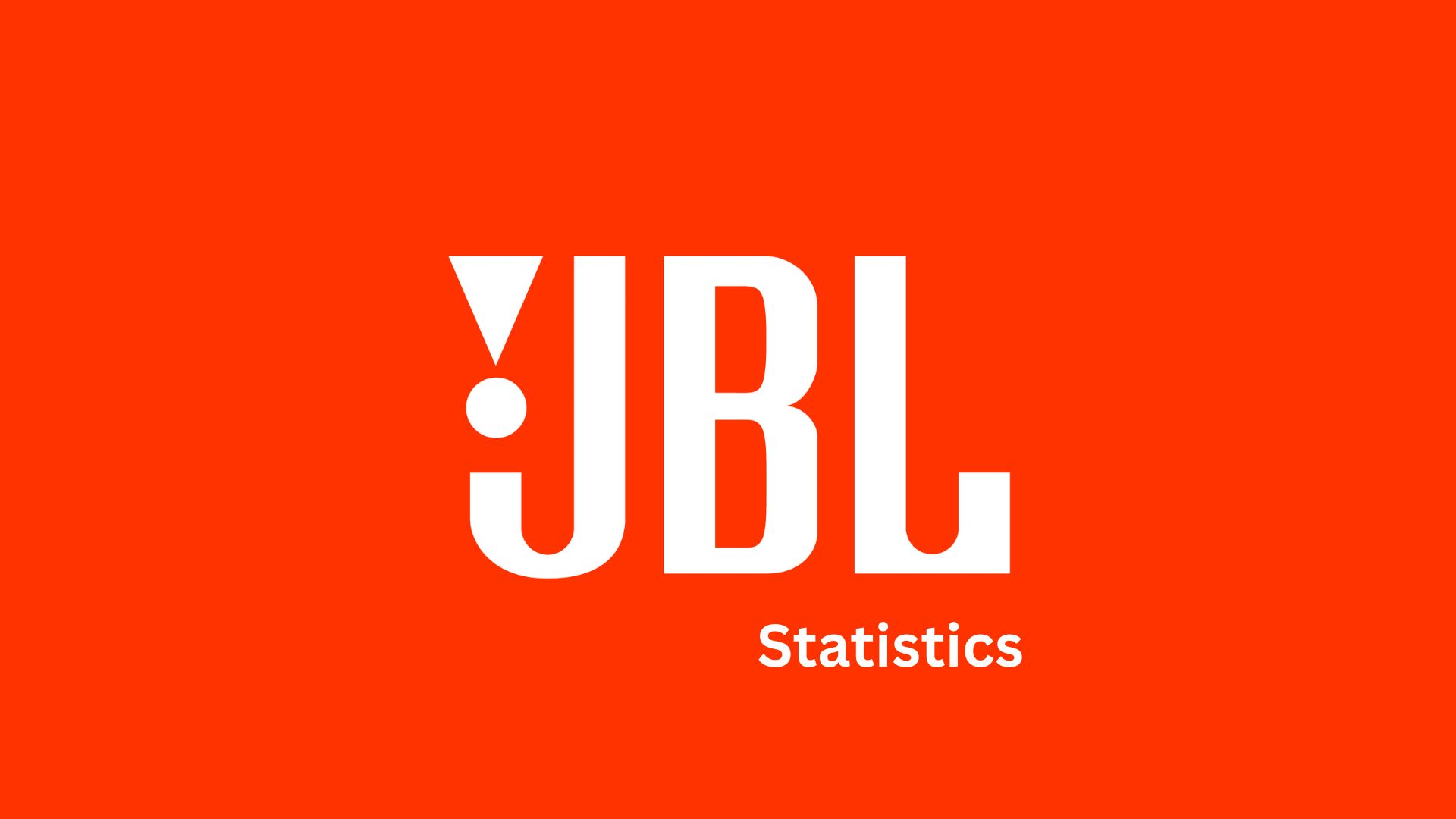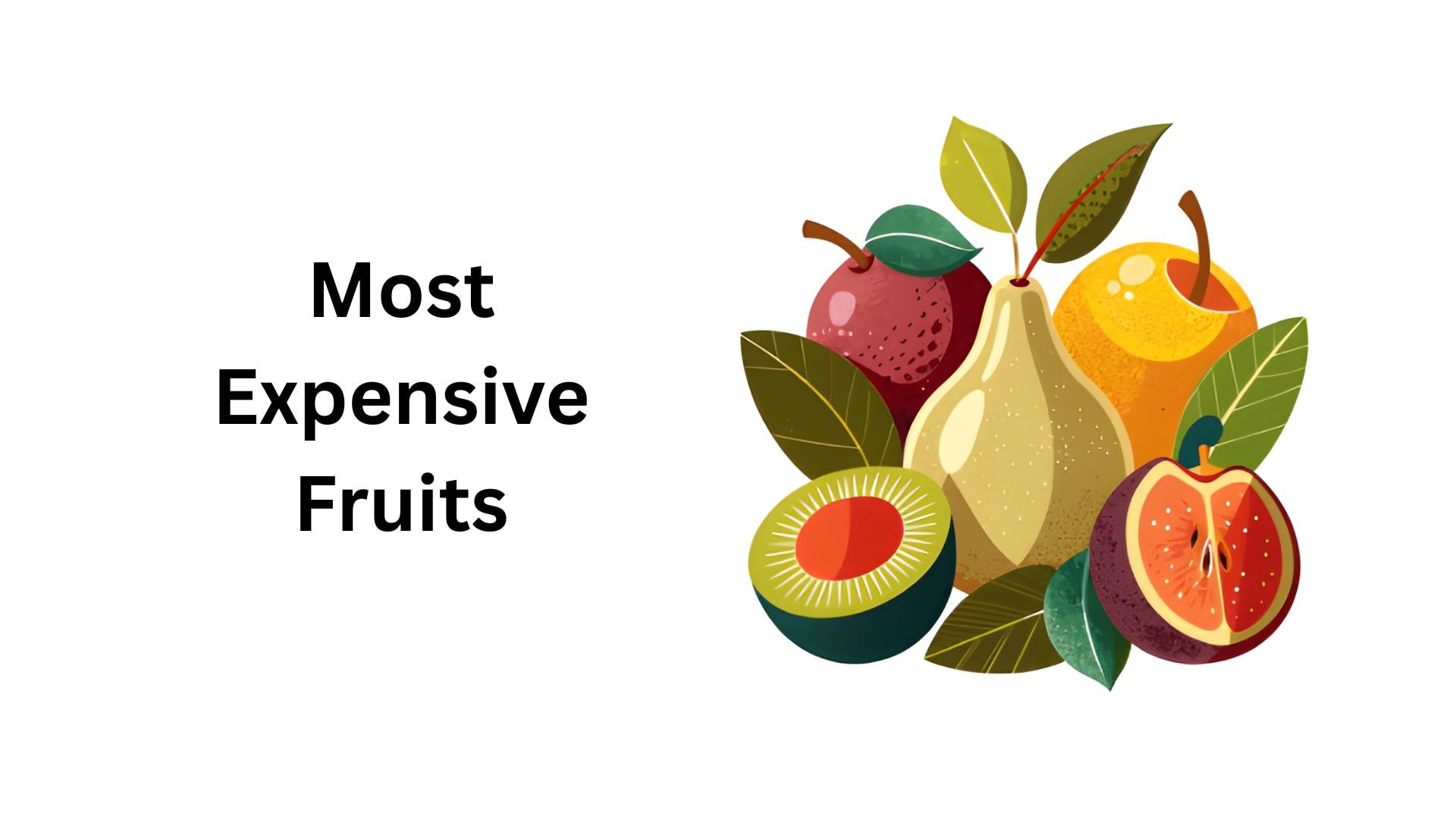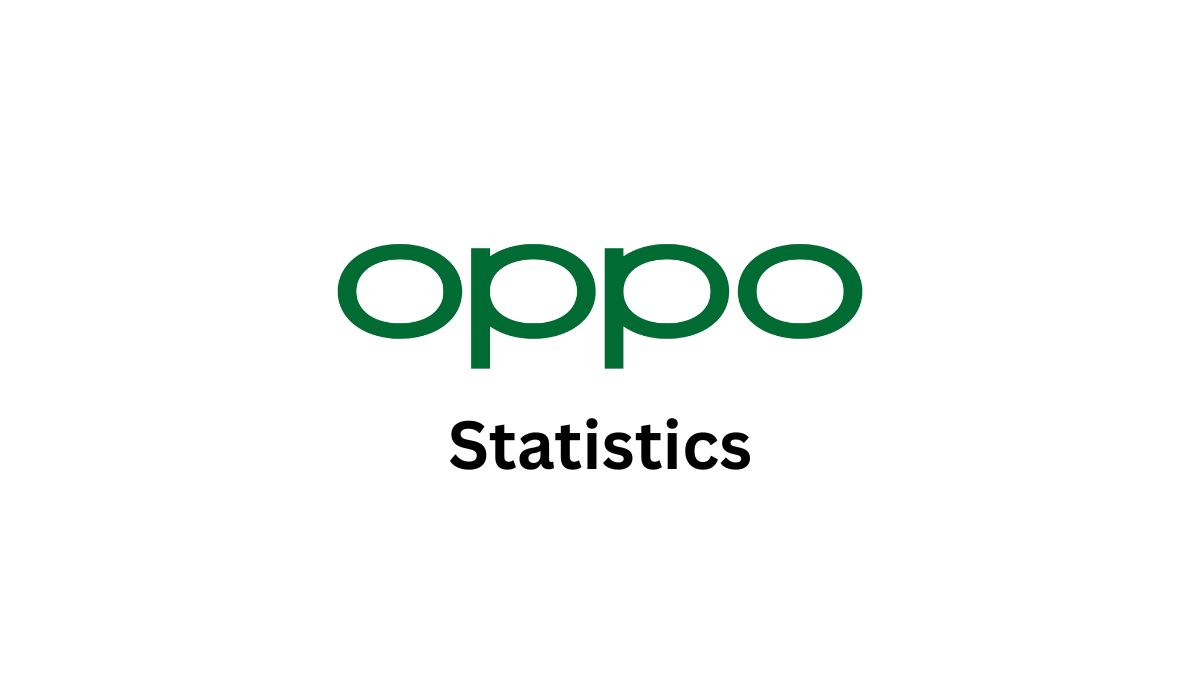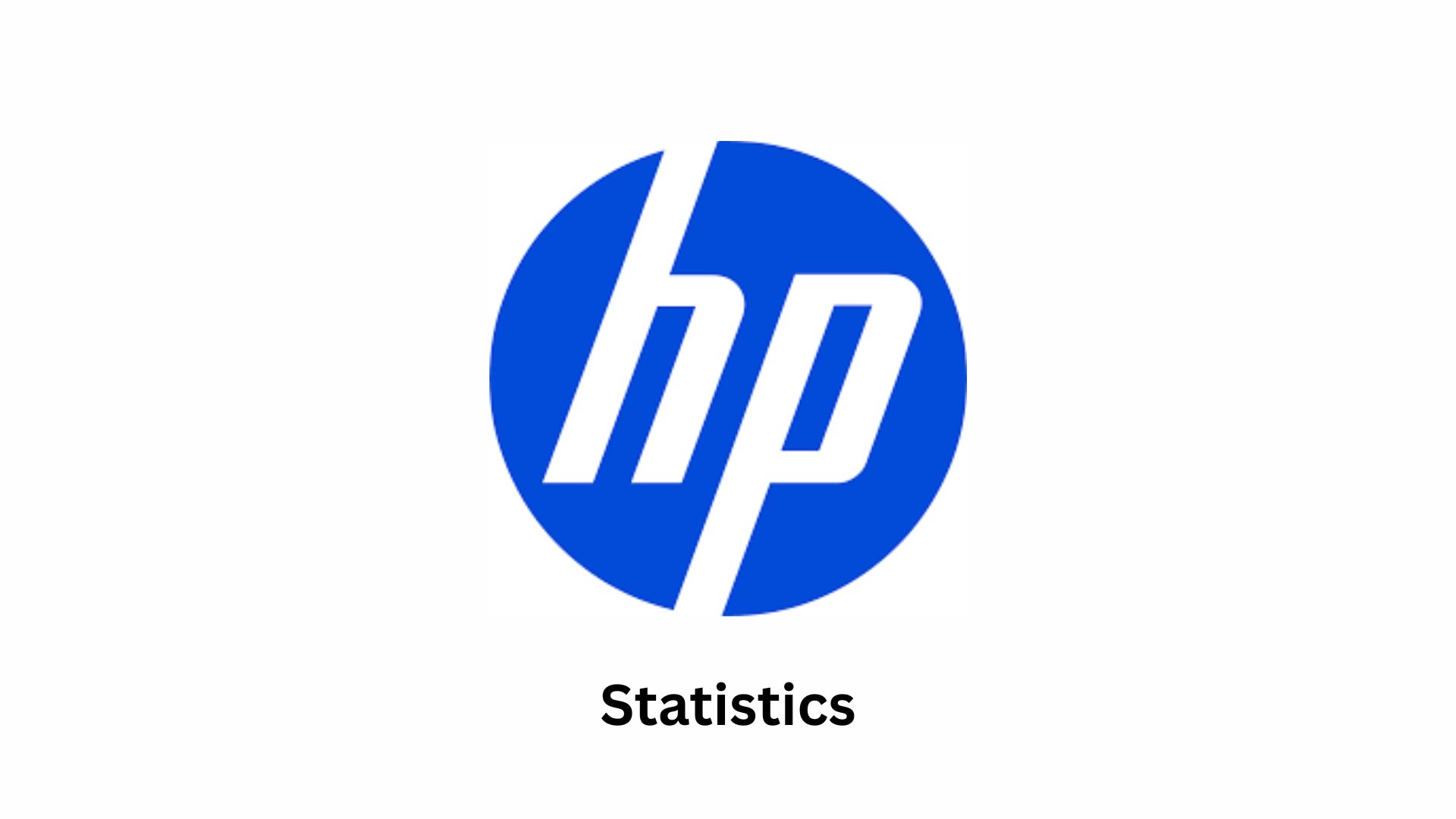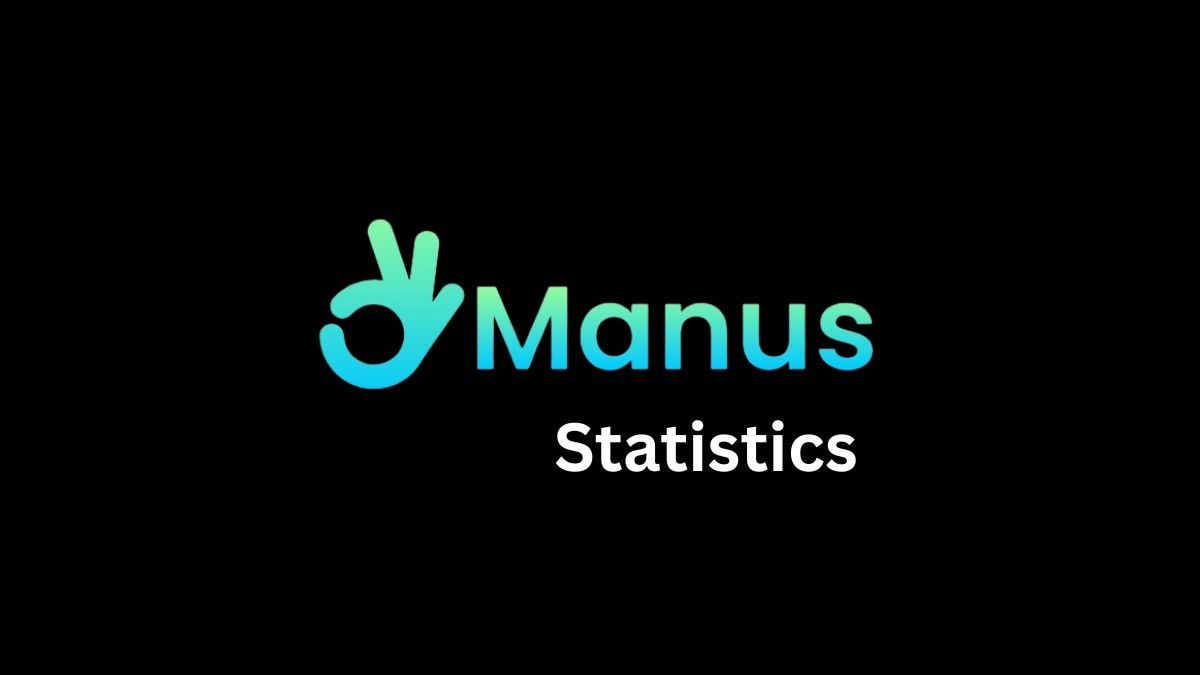(Secure Access Service Edge) SASE Statistics By Market Share and Facts (2025)
Updated · Nov 07, 2025

Table of Contents
- Introduction
- Editor’s Choice
- General Secure Access Service Edge (SASE) Statistics
- SASE Market Size
- SASE Market Share by Region
- By Components
- By Offering
- By End-User Vertical
- US SASE Market Statistics
- Factors Impacting the Market of SASE
- State of SASE Deployment Analyses
- Emerging Cloud Security Tools Analysis
- Top Business Cases for Implementing a Zero Trust Security Strategy
- Recent Developments of Secure Access Service Edge (SASE)
- Conclusion
Introduction
Secure Access Service Edge (SASE) Statistics: Secure Access Service Edge (SASE) is transforming how companies protect their networks by consolidating networking and security into a single, cloud-based service. With more people working remotely and applications migrating to the cloud, businesses worldwide are investing in SASE solutions. It combines technologies like SD-WAN, Zero Trust Network Access (ZTNA), secure web gateways, cloud access security brokers (CASB), and firewall-as-a-service (FWaaS) into a single system.
Putting these tools together helps organisations keep data safer, reduce complex setups, and ensure networks run smoothly for users across many locations. This article highlights SASE’s rapid market growth, driven by the need for secure remote access, simplified management, and compliance with evolving cybersecurity regulations. Adoption is growing as firms seek secure, scalable, and simple connectivity.
Editor’s Choice
- According to market.us, the global Secure Access Service Edge market is expected to reach USD 4.3 billion by 2025.
- According to Coherent Market Insights, the SD-WAN segment is the largest, accounting for approximately 31.4% of the market.
- North America is expected to be the largest region, accounting for approximately 46.3% of the market.
- The Asia Pacific, with a projected 21.8% share, is forecast to grow the fastest during the period.
- As of 2024, the United States accounted for the majority of that total, contributing approximately USD 1.2 billion and growing at a rate of about 21.6% annually.
- The platform segment dominated the Secure Access Service Edge (SASE) market, accounting for 73%.
- According to Modor Intelligence report analyses, Security-as-a-Service (SaaS) led the SASE market in 2024 with a 57.10% share, while Network-as-a-Service (NaaS) is expected to grow at a 27.80% CAGR through 2030.
- Bringing SD-WAN, FWaaS, SWG, CASB, and ZTNA together into a single cloud-native platform increases the CAGR by about 4.2%.
- According to recent surveys on Hughes.com, only 8% of organisations report a full SASE implementation.
General Secure Access Service Edge (SASE) Statistics
- Around 84% of companies now operate with a hybrid workforce. This means employees are working from offices, homes, and various remote locations using Wi-Fi networks.
- IT teams are responsible for protecting company networks accessed from multiple locations and devices.
- The rise of the Internet of Things (IoT) has added more challenges, as approximately 42 billion IoT devices are connected globally, each requiring secure access management.
- On average, an organization uses more than 100 applications, making network and data security more complex.
- A 2025 survey involving over 400 IT and security professionals shows that more than 60% of organizations have adopted hybrid or fully remote work models.
- Businesses are actively seeking advanced solutions to secure their networks and manage connectivity efficiently.
- Secure Access Service Edge (SASE) has become a key solution, combining security and networking in one system.
- Only 8% of organizations have fully implemented SASE, but adoption is rising. About 32% are in the process of deploying it, while 24% plan to implement it within a year.
- Despite strong adoption growth, many IT teams face challenges in integrating these systems, managing consistent security policies, and maintaining skilled professionals.
- The distributed workforce has changed how organizations protect their networks, requiring stronger and unified approaches like SASE.
- The main drivers for adopting SASE are:
- 51% focus on securing remote and hybrid access.
- 46% prioritize stronger cloud security.
- 47% aim for simpler and more unified security management.
SASE Market Size

- The Global Secure Access Service Edge Market is estimated to grow from USD 3.4 billion in 2024 to around USD 30.3 billion by 2034, expanding at a strong CAGR of 24.3% during 2025–2034.
- In 2024, North America led the global market, accounting for more than 40% of the share, and generated approximately USD 1.3 billion in revenue.
- The United States was the largest contributor within the region, valued at approximately USD 1.2 billion in 2024.
- The U.S. market is anticipated to rise from USD 3.2 billion in 2029 to nearly USD 8.5 billion by 2034, registering a CAGR of 21.6% through the forecast period.
- By offering, Security as a Service (SECaaS) accounted for the largest portion of the market in 2024, holding about 57% share.
- Considering organization size, Large Enterprises dominated with around 62% of total adoption, reflecting stronger integration capabilities and higher cybersecurity budgets.
- By industry vertical, the IT & Telecom sector represented the highest share at 25%, driven by its continuous demand for scalable, cloud-based security and remote access solutions.
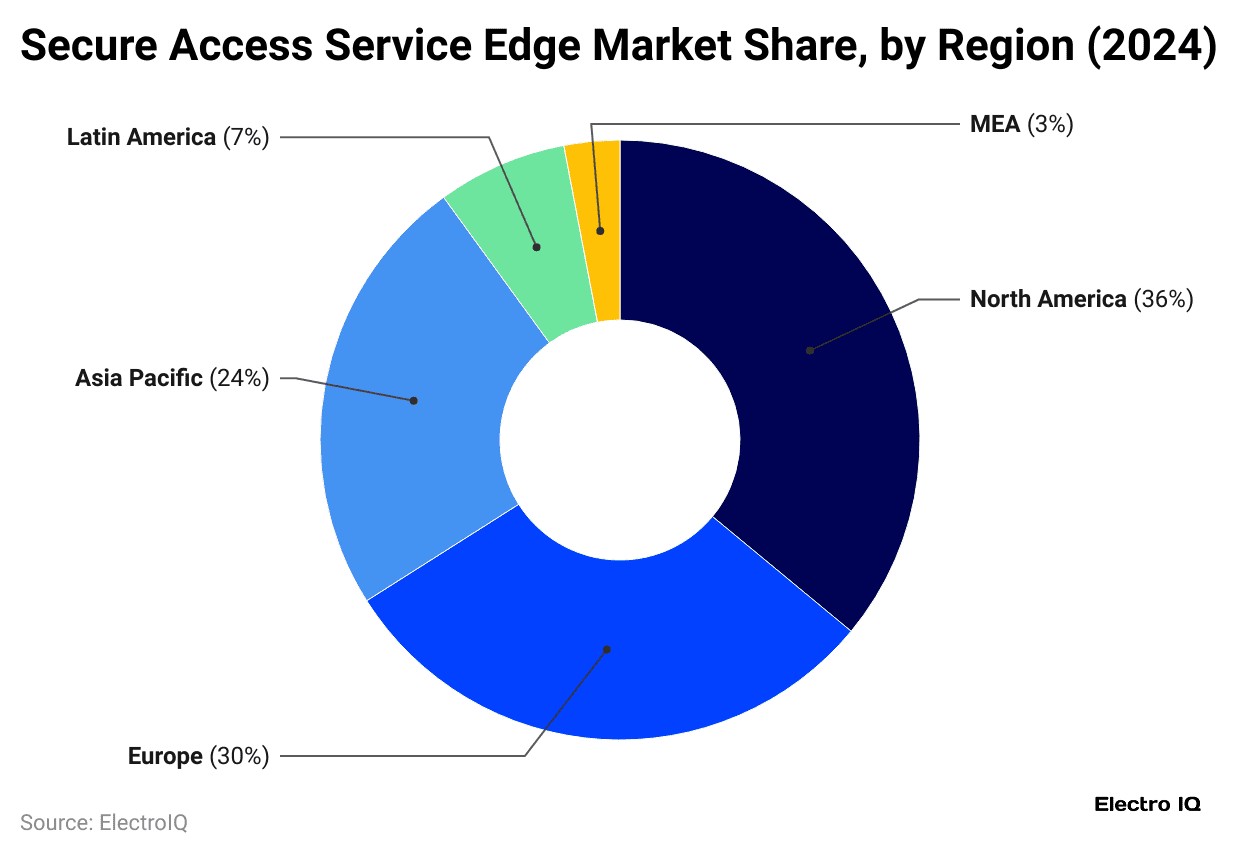
- In 2024, North America accounted for the largest share of the SASE market at 36%, followed by Europe at 30%.
- The remaining regions accounted for 24% in Asia Pacific, 7% in Latin America, and 3% in the Middle East & Africa.
By Components
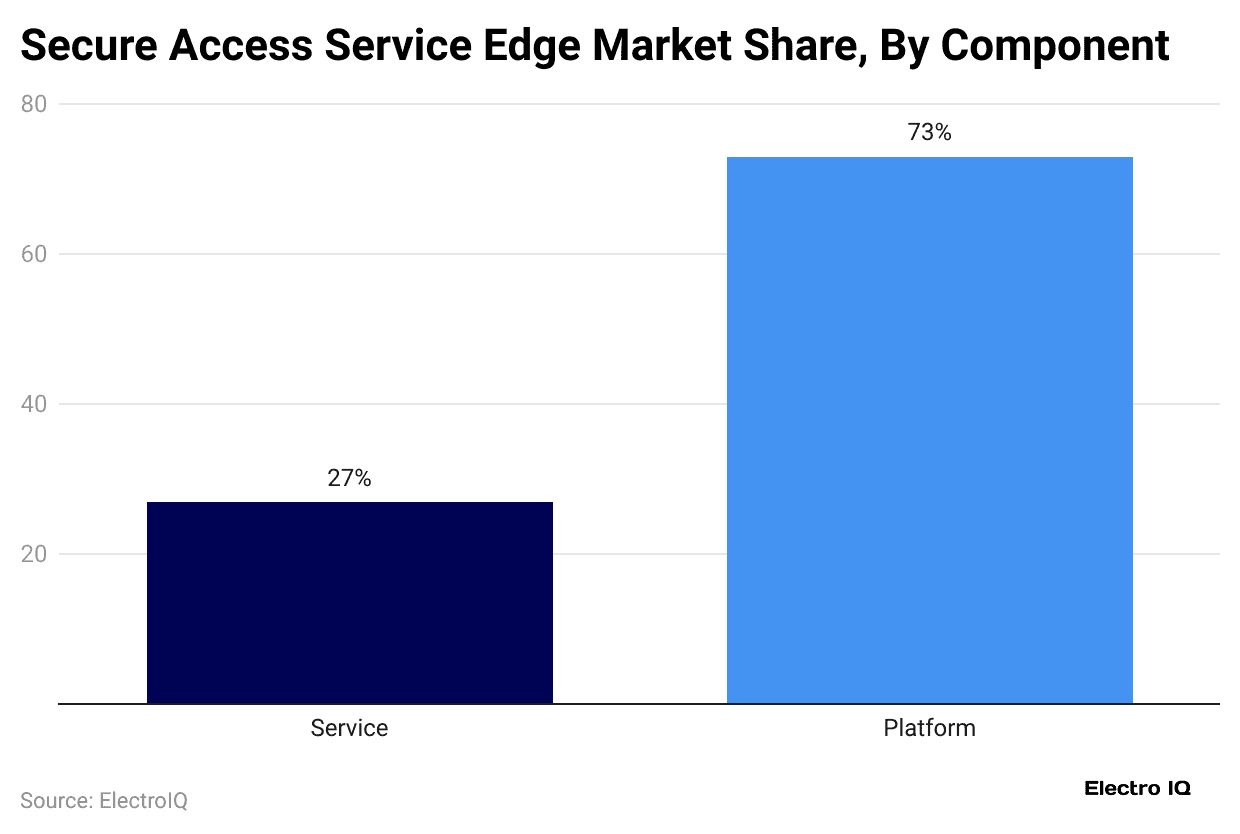
- In 2024, the platform segment dominated the Secure Access Service Edge (SASE) market, accounting for 73%.
- Meanwhile, the services segment accounted for the remaining share of 27%.
By Offering

- In 2024, Security-as-a-Service made up 57.10% of total revenue. Additionally, the Network-as-a-Service accounted for the remaining 442.9% of the market share.
By End-User Vertical
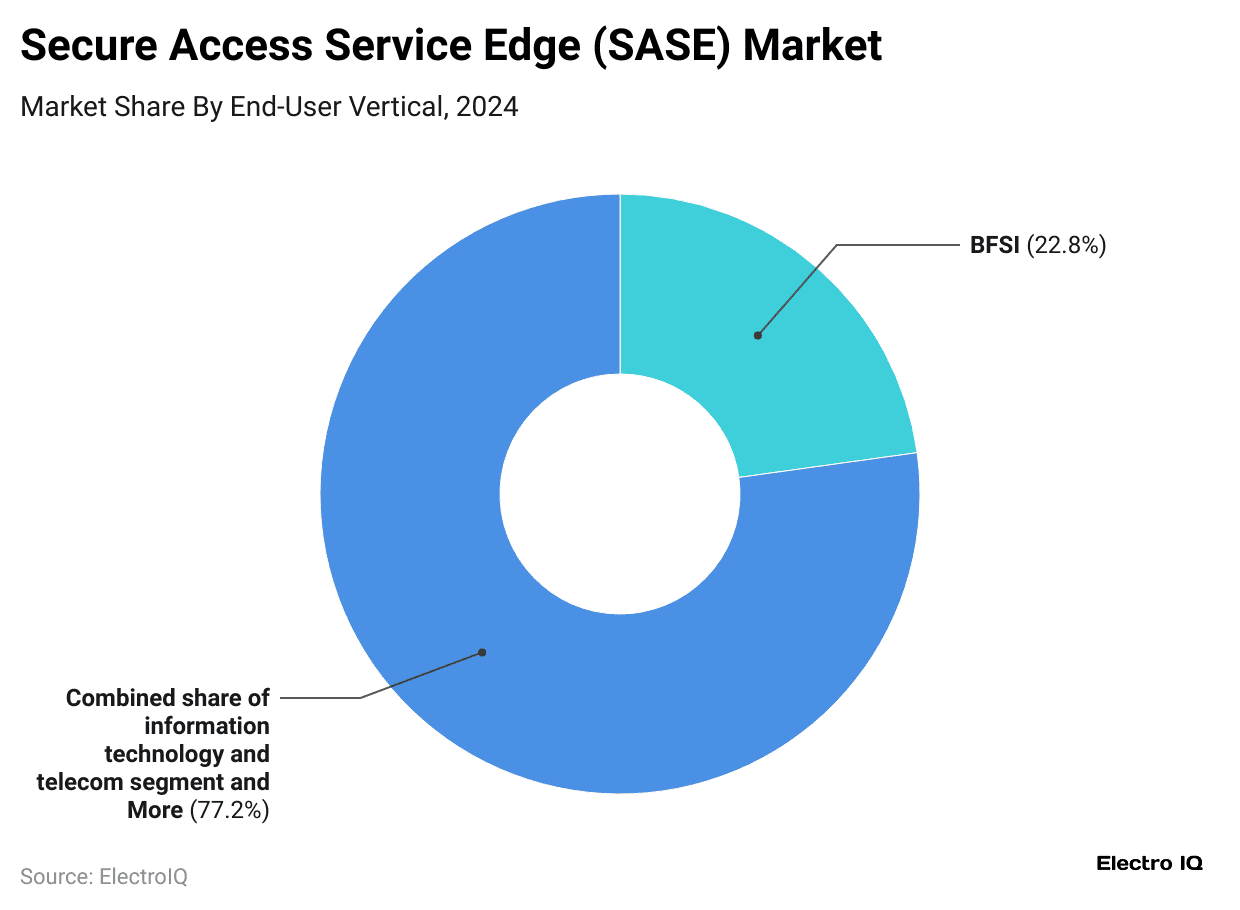
- In 2024, the banking, financial services, and insurance sector captured around 22.80% of total revenue.
- Additionally, the BFSI sector accounted for 77.2% of revenue.
US SASE Market Statistics
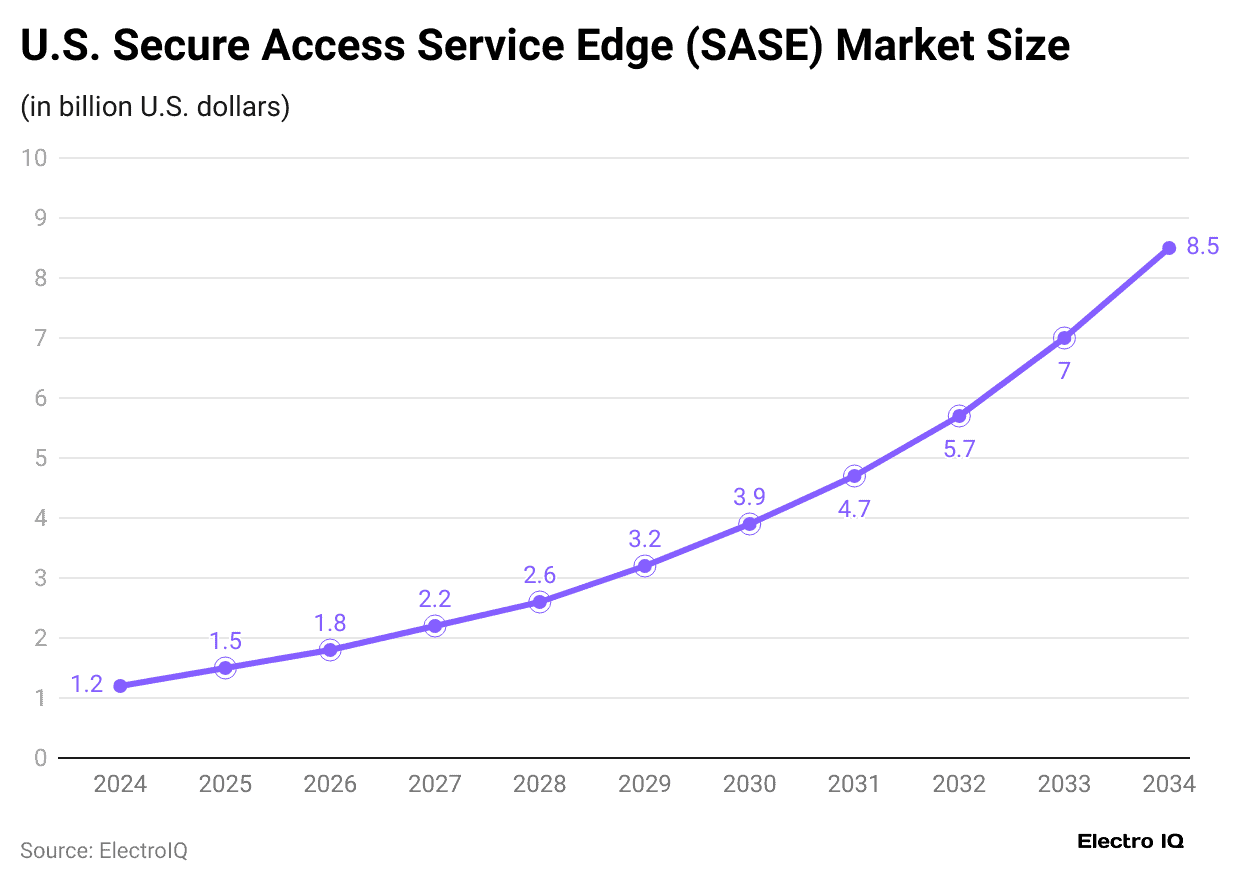
- In 2024, the U.S. Secure Access Service Edge (SASE) market was valued at approximately USD 1.2 billion and is expected to reach nearly USD 1.5 billion by the end of 2025.
- In the coming years, the market size is expected to be USD 1.8 billion in 2026, followed by USD 2.2 billion (2027), USD 2.6 billion (2028), USD 3.2 billion (2029), USD 3.9 billion (2030), USD 4.7 billion (2031), USD 5.7 billion (2032), USD 7 billion (2033), and USD 8.5 billion (2034).
- The market is projected to reach a CAGR of 21.6% from 2025 to 2034.
Factors Impacting the Market of SASE
- Bringing SD-WAN, FWaaS, SWG, CASB, and ZTNA together into a single cloud-native platform increases the CAGR by about 4.2%.
- The rise of remote and hybrid work after 2025 adds roughly 3.8% to the CAGR.
- More managed security providers selling ready-made “SASE-in-a-box” solutions boost the CAGR by around 2.9%.
- AI that identifies threats more quickly and reduces response time increases the CAGR by approximately 3.5%.
- Telco edge rollouts that allow low-latency inspection contribute roughly 2.1% to the CAGR.
- Data-sovereignty rules (sovereign cloud) in the EU and APAC lift the CAGR by about 2.8%.
State of SASE Deployment Analyses
- According to recent surveys on Hughes.com, only 8% of organisations report a full SASE implementation, 32% are currently implementing or progressing with SASE projects, and 24% plan to adopt SASE within the next 12 months.
- Palo Alto Networks also states that around 39% said they have deployed or will deploy SASE within 24 months.
- Cybersecurity Insiders further shows that core components ZTNA and SD-WAN achieved adoption rates of 51% and 50%, respectively.
Emerging Cloud Security Tools Analysis
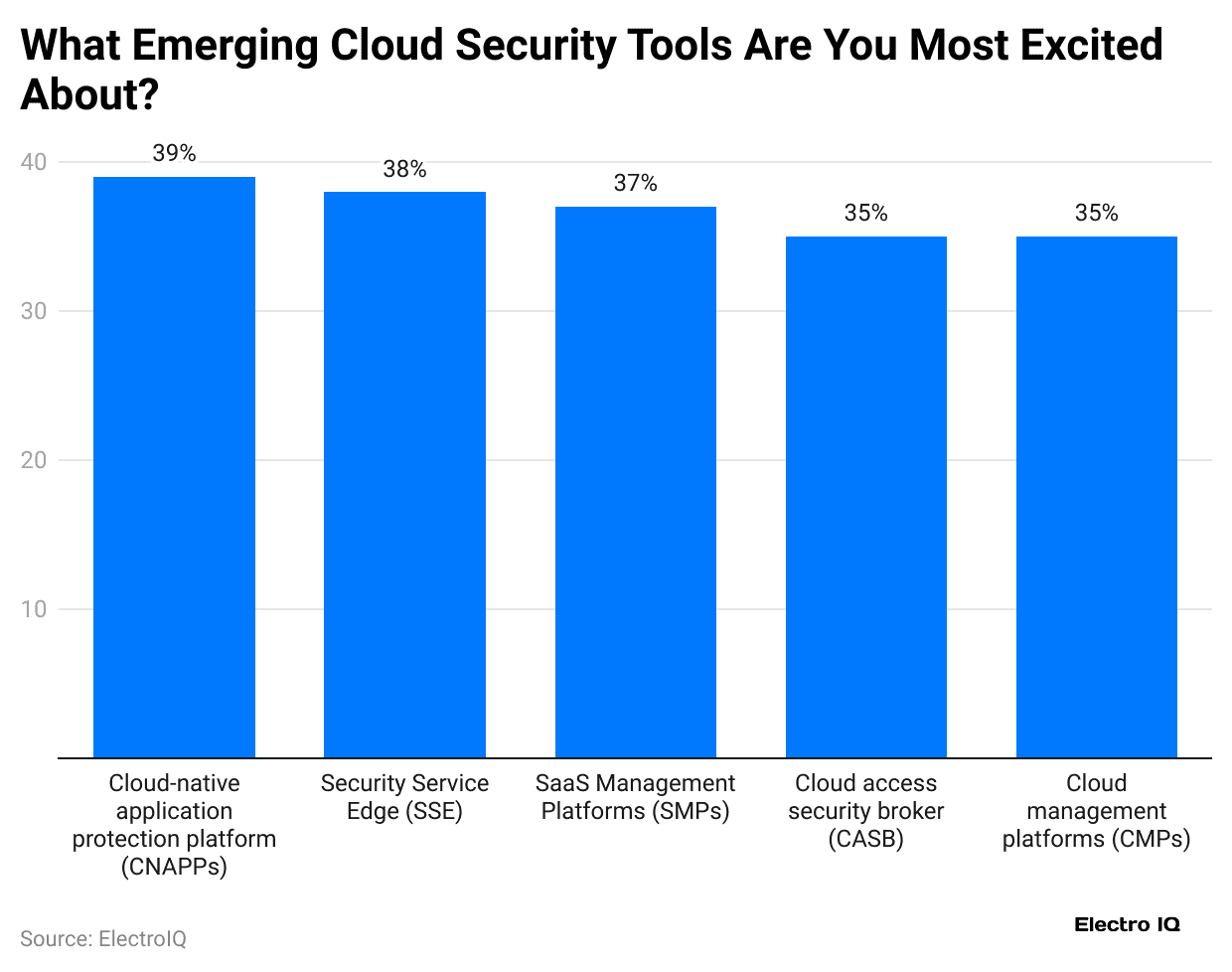
- Cloud-native application protection platforms (CNAPPs) are the most popular, with 39% of people excited about them.
- Besides, others are followed by Security Service Edge (SSE) tools at 38%, and SaaS management platforms (SMPs) at 37%.
- Lastly, Cloud Access Security Brokers (CASBs) and Cloud Management Platforms (CMPs) accounted for 35% each.
Top Business Cases for Implementing a Zero Trust Security Strategy

- According to 63% of respondents, protecting customer data is considered the highest priority.
- This is followed by 51% adopting a uniform security approach across other systems and applications.
- Additionally, 47% of businesses focus on reducing accidental internal breaches and on simplifying their security stack to improve efficiency.
- Lastly, 46% of organisations emphasise maintaining compliance with data protection and regulatory standards.
Recent Developments of Secure Access Service Edge (SASE)
- On August 22, 2025, Netskope filed S-1 with the SEC to pursue a Nasdaq IPO.
- In July 2025, Aryaka joined TD SYNNEX, delivering its Unified SASE service worldwide for enterprises.
- Palo Alto Networks, in April 2025, upgraded Prisma SASE Browser 2.0, with stronger data security and smarter AI.
- Palo Alto Networks launched Prisma SASE 5G (March 2025) to secure future mobile, connected networks.
- In February 2025, Kyndryl launched end-to-end SASE services with Palo Alto Networks’ Precision AI technology.
Conclusion
To sum up, Secure Access Service Edge (SASE) is now essential for modern network security. As more people work remotely and businesses move to the cloud, SASE combines networking and security into a single cloud-delivered service, simplifying management. Its fast adoption and growing investments show organisations trust it to protect widely distributed systems.
With ongoing improvements such as zero-trust models, AI-powered threat detection, and edge computing, SASE is likely to play a central role in helping companies securely update their digital operations in the years ahead and strengthen overall business resilience.
FAQ.
SASE works by merging networking and security services through a unified, cloud-based delivery framework.
- SD-WAN: Optimises network performance.
- Zero Trust Network Access (ZTNA): Verifies every user and device.
- Firewall-as-a-Service (FWaaS): Offers cloud-based protection.
- Secure Web Gateway (SWG): Filters and monitors web traffic.
- Cloud Access Security Broker (CASB): Controls access to cloud applications.
SASE is ideal for organisations with remote teams, cloud-based operations, and multiple branch office networks.
SASE delivers its SD-WAN and SSE components through Networking-as-a-Service (NaaS) and Security-as-a-Service (SECaaS) models.
Leading vendors in the Secure Access Service Edge (SASE) market include Zscaler, Palo Alto Networks, Cisco, Netskope, Cloudflare, and Fortinet.

Maitrayee Dey has a background in Electrical Engineering and has worked in various technical roles before transitioning to writing. Specializing in technology and Artificial Intelligence, she has served as an Academic Research Analyst and Freelance Writer, particularly focusing on education and healthcare in Australia. Maitrayee's lifelong passions for writing and painting led her to pursue a full-time writing career. She is also the creator of a cooking YouTube channel, where she shares her culinary adventures. At Smartphone Thoughts, Maitrayee brings her expertise in technology to provide in-depth smartphone reviews and app-related statistics, making complex topics easy to understand for all readers.


